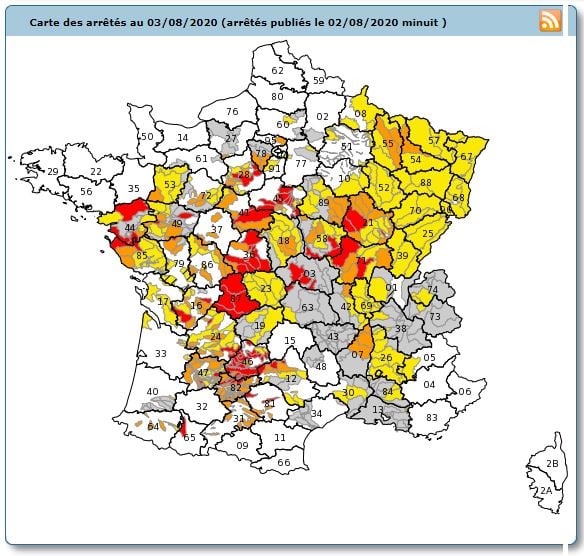The French environment ministry has updated its drought map which shows that as of August 3rd, 68 French départements have some form of water restriction in place.
This summer is forecast to be another exceptionally long, hot and dry one and in many areas groundwater levels are low.
The Environment Ministry’s Propluvia map shows the restrictions in detail, as many départements have water restrictions in only some areas.
There are three levels of water restriction in place.
If you live in a yellow zone then this means restrictions will be in place at certain times over watering the garden or washing the car. Golf courses and public green spaces such as parks will have restrictions at certain times and farmers have water restrictions in place up to three days a week.
If you live in an orange zone farmers will face restrictions for at least half of the week, while car washing and garden watering are subject to strict controls -including a total ban – at all times, along with water golf courses or parks.
If you live in a red zone water use is only allowed for priority reasons – drinking, health reasons or civil security reasons while farmers also face bans on use.

For an interactive version of this Propluvia map, click here
The exact nature of the restrictions is decided at préfecture level, so if you live in a département with restrictions in place, head to your local préfecture’s website to find out exactly what you can and cannot do.



 Please whitelist us to continue reading.
Please whitelist us to continue reading.
Member comments